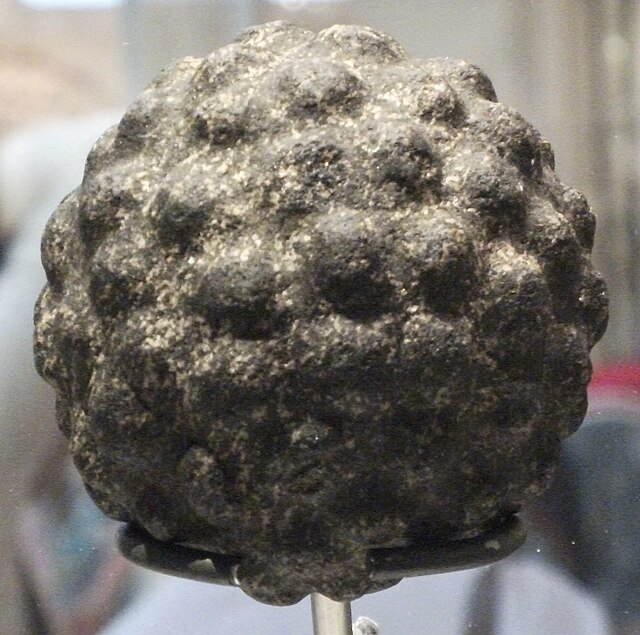In archaeology, a stone ball or petrosphere is the name for any spherical man-made object of any size that is composed of stone. These mainly prehistoric artifacts may have been created or selected, but altered in some way to perform their specific function, including carving and painting.
Three prehistoric Scottish carved stone balls, in Kelvingrove Art Gallery and Museum, Glasgow
Alignment of five Pre-Columbian stone spheres of Costa Rica in Museo Nacional de Costa Rica.
Carved stone balls are petrospheres dated from the late Neolithic, to possibly as late as the Iron Age, mainly found in Scotland, but also elsewhere in Britain and Ireland. They are usually round and rarely oval, and of fairly uniform size at around 2+3⁄4 inches or 7 cm across, with anything between 3 and 160 protruding knobs on the surface. They range from having no ornamentation to extensive and highly varied engraved patterns. A wide range of theories has been produced to explain their use or significance, with none gaining very wide acceptance.
Carved stone ball, classed as Neolithic
Three Scottish examples, in Kelvingrove Art Gallery and Museum, Glasgow
Exceptionally elaborately decorated ball from Towie in Aberdeenshire, dated from 3200–2500 BC
Another example, displayed at the British Museum





